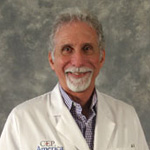“Every patient, every shift, every site.” This may sound like something Vince Lombardi would have said if he had worked in a hospital rather than on a football field; however, it is a message very appropriate for the Acute Care Continuum today.
The role of each individual along the care continuum has never been as important as it is now. With today’s emphasis on the transitions of care as patients move between departments, and with EMR connecting everyone in real time, each provider and staff member has the potential to make a substantial difference within the hospital ecosystem.
Why are individual members of the Acute Care Continuum more important than ever? Healthcare costs consume 18% of the US GDP. According to the ARHQ Medical Expenditure Panel Survey forty percent of those costs are related to inpatient care, and hospitals are under pressure to improve efficiency and reduce costs. Since the ED is the gateway into the hospital, accounting for 55% of inpatient admissions, it is apparent that the ED must align with other hospital members to ensure consistently smooth transitions into the inpatient setting. Any fumble, or even a delay of game penalty, would lose points for the entire hospital.
Like players on a super bowl team, emergency physicians and hospitalists must be able to depend on one another when the heat is on. We need to work together to create evidence-based protocols for evaluating inpatient admissions, standardized patient flows, and foster effective and efficient patient care. Enhanced provider communication and inpatient throughput processes have been shown to increase patient satisfaction, decrease length of stay, and enhance quality of care and reduce costs.
Wesley Curry, MD wrote last week about the importance of transitions of care. He points out that improving these transitions creates a virtual business partnership between departments that facilitates economies of scale and improves coordination of care. If every provider applies this line of thinking to every patient encounter, then we will only continue to improve the efficiency throughout the hospital and the experience for our patients.
Let’s all make a conscious commitment to support the Acute Care Continuum by bringing our “A” game to each and every patient encounter. We need to communicate and collaborate to the best of our ability every day with patients, family members, ED staff, social workers, case managers, home health providers, hospice organizations, private physicians, outpatient physicians, on-call specialists, SNF physicians, and all others involved in patient care. If we each give our individual best and also collaborate at an optimal level, the whole will be greater than the sum of its parts.
What can every individual in the hospital do to support today’s highly integrated hospital and the transitions of care? The answer is clear: "Every Patient, Every Shift, Every Site."






















